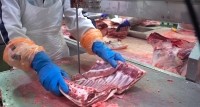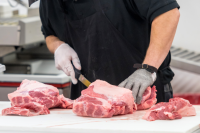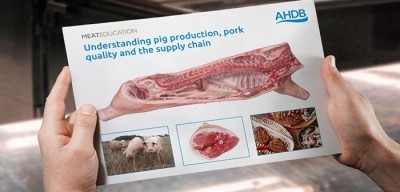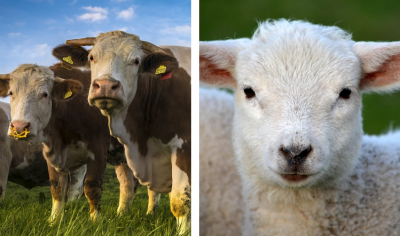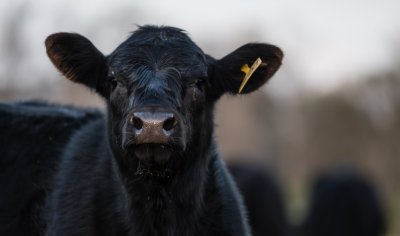Abattoir spotlight
For the chop: mounting pressures in the UK abattoir sector
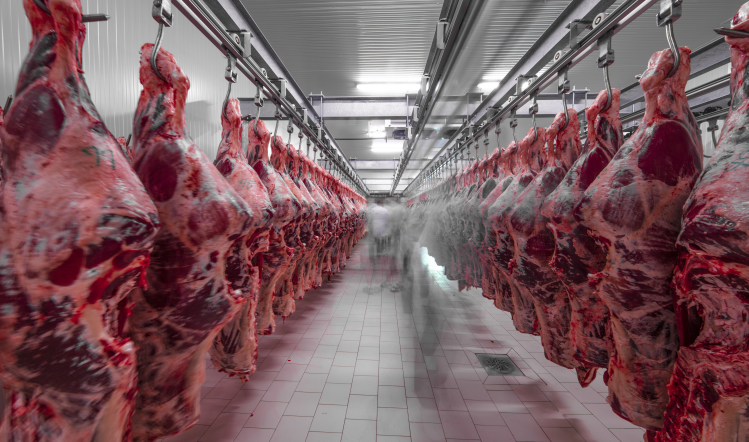
The UK abattoir sector is under severe pressure from several quarters. Between struggling to maintain throughput and attract staff, there has been a long-term decline in the number of abattoirs in the country.
To look at the figures, it’s actually staggering. According to the All-Party Parliamentary Group for Animal Welfare (APGAW), there were 30,000 abattoirs in the UK in 1930, dropping to 249 in 2017, marking a 99% decrease. Of these remaining 249, there are just 56 small red meat abattoirs across the UK.
Unfortunately, it doesn’t bode well for the future either. The latest Plimsoll analysis of the sector shows that, of 103 UK abattoir businesses surveyed, 25 are classified as being in danger while a further 11 have a caution against them.
In its report, Plimsoll said that nine out of 10 previously failed abattoir businesses were given the same danger rating over the past two years, so we may be looking at a glut of closures down the line.
The situation has become so dire that APGAW launched an inquiry into the issue, seeking to assess whether the reduction in numbers of small and medium-sized abattoirs in the UK has negatively impacted animal welfare.
Report still to come
A report is expected later in the year, but the group received submissions from trade bodies, processors and the Campaign for Local Abattoirs (CFLA), led by retail butcher John Mettrick.
In a letter to the Department for Environment, Food & Rural Affairs (Defra) on the issue, Mettrick said: “We have hit a perfect storm of problems: increased costs, rock bottom prices for hides and skins, some gold-plated regulations, and excessive paperwork, much of it involving unnecessary duplication.”
The Plimsoll analysis also shows that 21 companies out of the 103 are selling at a loss for the second year running. The report stated: “These serial loss-makers are adding to the congestion in the market, often undercutting the rest of the market and driving down profit margins across the board.
“The next 12 months represents something of a crossroads for these companies as they face two distinct choices: either they operate more responsibly or they run out of cash.”
It’s not just cash they might run out of – it’s staff, too. British Meat Processors Association (BMPA) research from January 2019 reveals that the average percentage of EU workers in meat processing companies is around 70%, albeit higher in the north-west, East Anglia and the south-east regions. Of these EU workers, the split is roughly 40% skilled butchers and slaughter line workers and 60% unskilled.
Automation: no silver bullet
While there is plenty of technology available for the abattoir sector, the BMPA insists that “automation is not a silver bullet” and “cannot replace many positions on a meat production line where the flexibility, dexterity and judgement of a human is still the best option”.
It says: “In some cases, BMPA members have been forced to remove machinery because it was producing 2% lower yields compared to skilled butchers – unsustainable in an industry running on 1% profit margins.”
With larger processors able to integrate slaughtering into their facilities, the pressure falls on the smaller abattoirs. In 2018, the Sustainable Food Trust’s report, A Good Life and a Good Death: Re-localising farm animal slaughter, concluded that the growth in the closure of smaller abattoirs over the past 40 years had coincided with the rise of multiple retailers in the UK and the construction of newer and larger abattoirs to supply them directly.
That isn’t something the larger abattoirs want to see happen, says Norman Bagley, policy director at the Association of Independent Meat Suppliers (AIMS). “Larger abattoirs have no wish to see smaller abattoirs go out of business as they fulfil very different functions for the meat industry.”
Bagley says that smaller abattoirs previously had limits on the number of units they could process, which hindered growth opportunities.
“There was no incentive to encourage expansion as they were limited to 20 units a week, but that has been lifted, which has represented the single greatest source of growth for small abattoirs which are capable of doing that [20 units] in a day. There is money to be made out there for abattoirs.”
Creeping labour problem
Bagley says the labour issue is progressing a lot more slowly than the industry would like. The problem is creeping throughout the entire abattoir sector, from those cutting to official veterinarians (OVs).
The lack of OVs was highlighted in a report by the Migration Advisory Committee (MAC) earlier this year. The report found that 95% of the veterinary workforce graduated overseas, with the “clear majority of these coming from the EU”.
It also cited a survey conducted by the British Veterinary Association, which found that the percentage of advertised vacancies receiving no applications had increased from 1% in 2015 to 5% in 2018, while similar adverts receiving three or fewer applicants has increased from 31% in 2015 to 44% in 2018.
With so many OVs and abattoir workers coming from the EU, and the immigration policy still very much up in the air ahead of the UK’s exit from the EU, there has been concerns about availability and what is being done about it.
“The Government looks to be very slowly coming round to realising how important overseas workers are to the UK meat industry and it seems we’re coming back to the way it was before,” says Bagley. “But these businesses need reassurances now.”
Like the BMPA, Bagley doesn’t believe automation is the perfect answer. “Automation isn’t going to happen in the smaller businesses, it’s simply not cost-effective. It will happen in the larger-scale businesses because they have the scope.”
This reduction in staff numbers also has safety implications, warns Richard Nethercot, group divisional manager, low risk, butchery division at Interfood Technology.
“This has a significant impact in terms of safely operating equipment. High staff turnover, with people sometimes now moving on after only a couple of weeks, means that training and re-training is under the spotlight. A consequence for equipment manufacturers and suppliers and, of course, those operating abattoirs, is an increased need to focus on health and safety to ensure that often inexperienced workers are kept safe.”
He says this trend has been “one of the drivers for the sales growth of the BladeStop bandsaw”. He explains that automation in the abattoir sector is growing but equip-ment such as BladeStop (pictured left) gives operators more options.
“Given the potential severity of injuries from blades rotating at high speeds, many abattoirs had understandably switched from manual operations to automated equipment. With BladeStop, they now have the option to return to manual cutting and the benefits this offers in terms of improved yield and accuracy.
“Automated equipment cannot offer the precision that a person can to achieve different cuts and is also unable to get as close to the product. With BladeStop, such cuts can be done safely, with the operator able to get up close without fear of injury.”
Slaughtering on the move
Mobile slaughterhouses are one way the decline in local abattoirs is being tackled globally.
In 2017, Swedish firm Hälsingestintan entered into a long-term partnership with French outfit Le Boeuf Ethique to introduce its mobile abattoir concept in France, while other markets such as New Zealand and Australia have embraced this model.
Earlier this year, the Scottish Government announced it was investigating mobile abattoirs to cope with closures in the more remote parts of the country.
It hopes the study will determine “whether or not mobile abattoirs would be viable in Scotland by providing detailed research of all aspects of what would be required, including the impact mobile abattoirs would have on the viability of existing processing facilities and supply chains”.
The Government hopes that “by slaughtering more animals in Scotland, and therefore closer to their place of production, benefits could be gained in the form of lower transport costs and transport carbon emissions, while also maximising economic and social benefits to rural communities across Scotland and increased animal welfare”.
Nottinghamshire-based Abachem Engineering currently runs a mobile abattoir service in the UK. It believes the service aids animal welfare and meat quality. It says that the “transportation of livestock from isolated areas across the land can have adverse effects not just on the animal’s welfare, but also from an ethical and sustainable viewpoint”.
Abachem offers the service because reducing travel time can create benefits such as reduced stress levels and a fall in anxiety for the animal, which in turn decreases the traces of adrenalin in the product, producing a better-quality cut of meat.
